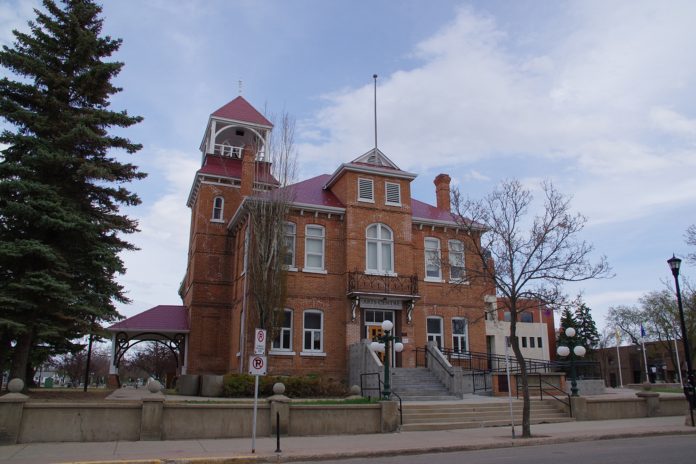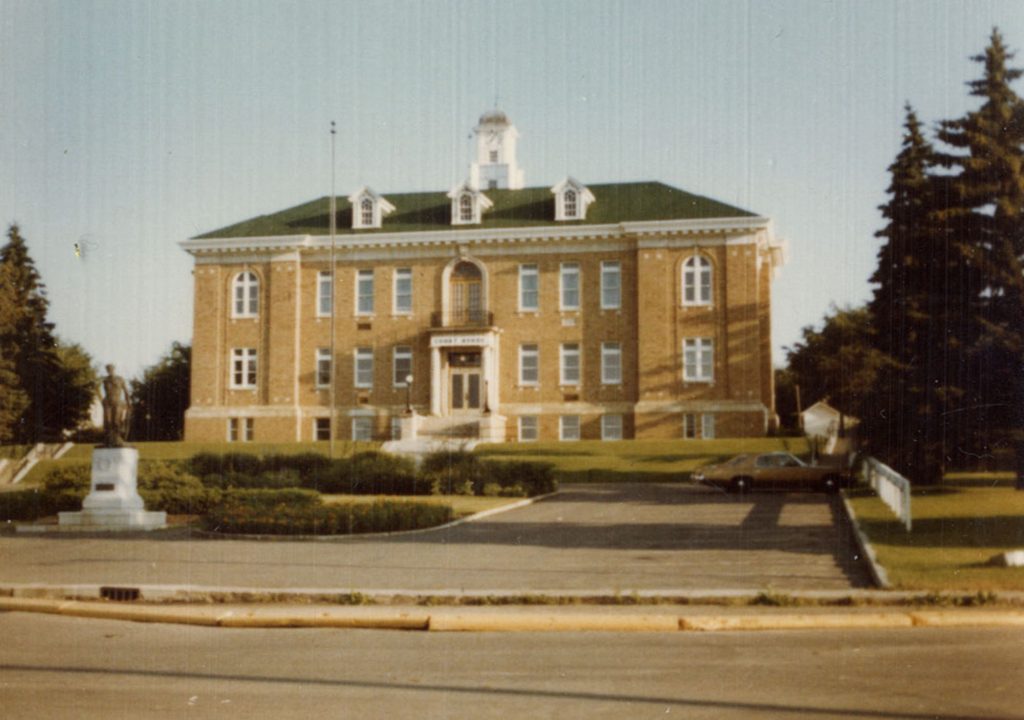
The year 1953 was a year of considerable growth in the City of Prince Albert. In the month of April alone, announcements were made with respect to the construction of a new Co-op store on Central Avenue, and a new $250,000 Medical Arts building across 14th Street from it. The Separate School board was looking to purchase land in the West Flat on which to build St. Michael’s school, while the congregation of Wesley United church began to replace their existent structure with a new sanctuary. On the other side of 11th Street East from Wesley church, for the first time, the Red Cross was to open its own newly constructed building.
That same spring, City Council received word that the federal government was prepared to provide a $500,000 grant which would be used to provide a hard surface runway at the air port.
In order for the City to be able to make use of this federal money, it would be necessary to extend the runway at the air port and, in order to do so, more land would have to be purchased. Negotiations were entered into to buy the required land, but the farmer who owned the desired property was unwilling to accept the offer made by the City. This resulted in a controversial move by the City to expropriate the property. Inevitably a court case arose from the City’s decision, with lawyer J.G. “Jerry” Crepeau representing the farmer, John Medynski. The initial argument which Crepeau planned to use was that the City could not legally expropriate land outside its municipal boundary.
However, Crepeau found another argument, an argument which he must have considered more compelling and therefore standing a greater chance of success. Information which he had received indicated that a member of Council, William Hill, was employed in the Sheriff’s office as a bailiff. Crepeau would argue that the province’s City Act (as the Cities Act was then called) precluded individuals serving on council if that person received a salary from the municipality or the province. These individuals included judges, provincial gaol wardens and custodial officers, sheriffs, and bailiffs.
The alderman in question was William Hill. Hill was a retired railroad engineer who was serving his fourth term on City Council. When questioned, Hill indicated that he did not believe that he was sitting on Council illegally but, should it be found that he was, he would resign immediately.
All this seemed fairly straight forward. But it did raise the question with respect to the validity of all those motions on which Hill had voted as a member of Council. Would Hill’s vote in support of expropriating Medynski’s land result in that motion being unlawful?
Medynski’s attempt to have Hill removed from Council was brought in front of the Court by Crepeau in June, 1953. Judge Hanbidge determined that the hearing was to be heard in July. At that hearing, it was decided that the case would be set over to an August hearing. In August, the hearing was postponed until September. The rationale for all these postponements is unclear. However, it is clear that as the summer months passed, it was more and more unlikely that the weather required for the paving of the extended runway would be available.
On September 2nd, 1953, Judge Gerein of the Humboldt District Court heard arguments with respect to the case. Jerry Crepeau continued to represent John Medynski, while John Cuelenaere represented William Hill. Crepeau argued that the City Act precluded Hill from running for, and being elected, to City Council due to his employment as a bailiff. He also argued that, had Hill not been a bailiff when he ran for Council but had later been appointed to his position as a bailiff, he should have resigned from Council at that time.
Cuelenaere called Sheriff Elliott to the witness stand. Elliott told the Court that Hill had been appointed to his position by the sheriff (Elliott) and not by the Public Service Commission. Hill fulfilled his duties as a bailiff for a fee, and depended upon the sheriff for his wage and expenses. He was not paid by the government. Hill had not taken any oath, and his employment could be terminated simply by the sheriff no longer calling him to perform any duties. Hill was not allowed to use any office stationery, and all his services resulted from instructions issued by the sheriff alone.
Crepeau asked whether Hill’s appointment had been advertised in the Saskatchewan Gazette, and Elliott replied that he had not seen any bailiffs “gazetted” during the past six years. He further responded that bailiffs were generally employed at the time in smaller judicial districts. In response to a further question, Elliott replied that, after hiring Hill, he had not sought to appoint any other individual.
After hearing the testimony, Judge Gerein indicated that he anticipated providing his decision within a week’s time. It was, in fact, twelve days before his judgment was released.

The headline on the front page of the September 14th edition of the Prince Albert Daily Herald read ”Hill Wins Case: Still an Alderman”.
Gerein appears to have accepted John Cuelenaere’s argument with respect to Hill’s employment as the five page decision read in part that “if the legislation had intended to include process servers in the City Act it would have named them rather than cover them with the word bailiff, particularly when a citizen’s right to hold office was at stake.”
It went on “I cannot see how serving processes, interviewing debtors, taking inventory, driving the sheriff, acting under extra-judicial processes can interfere with or in any way affect the responsibilities which attach to a seat on city council. Nor can an alderman’s duties in any way conflict with a general handyman or process server.”
His conclusion was very clear: “I find, therefore, that the respondent is not a bailiff within the meaning of Section 23 of the City Act and he has therefore not on that account forfeited his seat as an alderman on the city council of Prince Albert.”
Gerein further wrote that his review of the evidence showed that Alderman Hill “was not appointed to an office or specific position, that no notice appeared in the Saskatchewan Gazette, no desk, space, phone stationery or other facilities were set up for Mr. Hill and he was not on the office or public service payroll.”
Later in the autumn of 1953, William Hill, after lengthy and obviously serious consideration, once again ran for City Council. He received sufficient votes to place fifth in the voting but, unfortunately for him, there were only four aldermanic vacancies.
The necessary land was purchased by the City and, in the spring of 1954, the air port runaway was lengthened and hard surfaced.
fgpayton@sasktel.net

